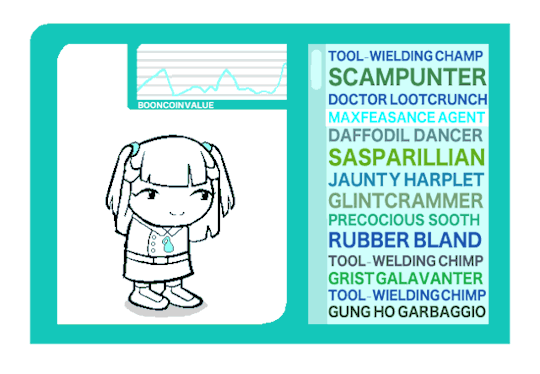#Big Data Analytics in Operations
Explore tagged Tumblr posts
Text
End-to-End Production and Operations Management: PGDM Program

#PGDM in Operations Management#Career in Operations Management#Big Data Analytics in Operations#PGDM in Production Mangament#Production Process Optimization#Production & Operations#PGDM Program
1 note
·
View note
Text
The Impact of Big Data Analytics on Business Decisions
Introduction
Big data analytics has transformed the way of doing business, deciding, and strategizing for future actions. One can harness vast reams of data to extract insights that were otherwise unimaginable for increasing the efficiency, customer satisfaction, and overall profitability of a venture. We steer into an in-depth view of how big data analytics is equipping business decisions, its benefits, and some future trends shaping up in this dynamic field in this article. Read to continue
#Innovation Insights#TagsAI in Big Data Analytics#big data analytics#Big Data in Finance#big data in healthcare#Big Data in Retail#Big Data Integration Challenges#Big Data Technologies#Business Decision Making with Big Data#Competitive Advantage with Big Data#Customer Insights through Big Data#Data Mining for Businesses#Data Privacy Challenges#Data-Driven Business Strategies#Future of Big Data Analytics#Hadoop and Spark#Impact of Big Data on Business#Machine Learning in Business#Operational Efficiency with Big Data#Predictive Analytics in Business#Real-Time Data Analysis#trends#tech news#science updates#analysis#adobe cloud#business tech#science#technology#tech trends
0 notes
Text
Getting to Know FRC Part 3: Full Service Catalogue
Renee Williams, President, Freight Revenue Consultants, LLC (FRC) At Freight Revenue Consultants (FRC), we’re all about making your trucking operations run smoother and more profitably. With our deep knowledge of the transportation industry and advanced data analytics skills, we tackle everything. What sets us apart is our extensive experience and strong network of contacts and vendors, which…

View On WordPress
#advanced data analytics#best practices#big data insights#business#business excellence#cash flow management#compliance challenges#continuous improvement#cost-saving strategies#fleet management#free consultation#Freight#freight industry#Freight Revenue Consultants#industry compliance#logistics#market trends#operational efficiency#operational optimization#profitability#small carriers#supply chain dynamics#technology solutions#Transportation#transportation industry#transportation regulations#transportation services#Trucking#trucking efficiency#trucking industry
0 notes
Text
Scaling Your Data Mesh Architecture for maximum efficiency and interoperability

View On WordPress
#Azure Databricks#Big Data#Business Intelligence#Cloud Data Management#Collaborative Data Solutions#Data Analytics#Data Architecture#Data Compliance#Data Governance#Data management#Data Mesh#Data Operations#Data Security#Data Sharing Protocols#Databricks Lakehouse#Delta Sharing#Interoperability#Open Protocol#Real-time Data Sharing#Scalable Data Solutions
0 notes
Text
Consider the ways oil and gas are already entwined with big tech. The foundation of the partnership between Big Tech and Big Oil is the cloud, explains Zero Cool, a software expert who went to Kazakhstan to do work for Chevron and chronicled this in Logic magazine. “For Amazon, Google, and Microsoft, as well as a few smaller cloud competitors like Oracle and IBM, winning the IT spend of the Fortune 500 is where most of the money in the public cloud market will be made”—and out of the biggest ten companies in the world by revenue, six are in the business of oil production. What are oil companies going to do with the cloud? Apparently, Chevron—which signed a seven-year cloud contract with Microsoft—generates a terabyte of data per day per sensor and has thousands of wells with these sensors. They can’t even use all that data because of the scale of computation required. “Big Tech doesn’t just supply the infrastructures that enable oil companies to crunch their data,” explains Zero Cool; they also provide analytic tools, and machine learning can help discover patterns to run their operations more efficiently. This is another reason why Big Oils need Big Tech; they have the edge when it comes to artificial intelligence/machine learning. “Why go through the effort of using clean energy to power your data centers when those same data centers are being used by companies like Chevron to produce more oil?” Zero Cool asks, also noting that one of the main reasons oil companies are interested in technology is to surveil workers.
Holly Jean Buck, Ending Fossil Fuels: Why Net Zero is Not Enough
91 notes
·
View notes
Text

==>

==>

The anthem of absolution is a gentle song. Sussurant whispers through the background of your life in time with the metronome tick of the doomsday clock in your dreams, now magnified by the empty rolling plains into a proclamation of triumph. For the first time in ten years you step outside your prison, and for the first time in your nineteen years you see a blue sky.
>Frolic through the seussian fields

Yeah this is pretty great.
>Find your next victim

Your big-ass ella purnell eyes spot a lone IMP clinging to a nearby pylon.
>Aim

==>

==>

==>

==>

==>

HAMSTERSPRITE: Nice shot.
>Level up

As you reach the respectable rank of MAXFEASANCE AGENT on your ECHELADDER for your accomplishment--the value of the single BOONCOIN in your GRIFTWALLET responding appropriately with your new notoriety--it occurs to you that in your excitement, you're skipping pretty far ahead in the timeline. What, do you expect a hypothetical audience to have some preexisting framework by which they could intuit the context of your adventure or something? That would be silly.
>Rewind a bit.

No, no, too far back.
>Skip ahead.

Oh come on! Spoilers!
>Find a happy medium between past and future.

That's more like it.
Your name is QIRSMIT though you prefer to go by SMITTY to your extremely small circle of online friends. You live on the tidally locked techno-industrial powerhouse planet of LUSTRIUM, an arbitrarily large number of years in the future removed from the hypothetical audience to this internal monologue. That planet will be destroyed shortly, this you know, or at least have a pretty good hunch about.
This is because you are some kind of PROPHET, with the ability to foretell disaster derived from the strings of numbers you see in your dreams. You turn these numbers into STATISTICAL DATAPOINTS that you compare to the present performance of the Lustrium economy to predict IMMANENTLY DEPRECIATING STOCKS AND CURRENCIES with unerring accuracy.
This has been your job for your entire life, ever since your adoption by the cyborg broker hivemind known collectively as the SHAREBEARS, after you were delivered to the roof of their building by a fortuitous meteor. While not particularly personable, they are attentive to your needs and quick to indulge the many interests you pursue in your free time.
These interests include OLD EARTH MOVIES though the films the Sharebears obtain for you are more often than not related to the stock market and/or data analytics. You enjoy a well-plotted graph, but in your free time you prefer the more mystical studies of SACRED GEOMETRY and OBJECTS OF MATHEMATICAL INTRIGUE.
You enjoy building elaborate MARBLE COURSES and running races, both because it is a practical study of PHYSICS AND ENTROPY as well as very fun to see little glass balls roll down a chute. You have damn good aim with a SLINGSHOT too in case those little glass balls aren’t moving fast enough.
You have an interest in the ancient art of the JAPANESE MANGA and own rare print volumes of your favorite series. You can also amuse yourself for many hours by playing with your dear PET HAMSTER. You are also a bit of a GAMER, particularly virtual reality and simulation games as a substitute for rather limited freedom.
You used to have a lot more freedom, but as the lynchpin of the Sharebears operation there have been several attempts on your life by rival broker organizations over the years. One psychic attack nearly succeeded, resulting in a long stay on the PSYCH MOON to restore your capabilities.
==>

Now you spend your nights floating in a somnotank of PSYGEL to insulate your mind against unseen threats, and live inside a hermetically sealed reinforced glass bunker at the center of the Sharebears cavernous trading floor. The value of your abilities has provided you with a comfortable life and secure employment, you couldn’t ask for more and on Lustrium alone there are much worse ways to live.
But you often wish you didn’t feel so…bunkertrapped. dwellingenclosed. abodenfixed. There’s probably a good word for it.
>Examine Shorts poster.

SHORTS is your favorite film of all time, quite possibly the greatest film ever made. Given to you by the Sharebears after a misinformed assumption about it's content due to the title. On first watch, your eyes were opened to a world of compelling nonlinear narrative structure, the antique but timeless humor of the year 2009, and whimsical all-ages wishing-rock-related hijinks. You have watched it many times since.
==>

You dearly wish Toby “Toe” Thompson, Loogie Short, and “Nose” Noseworthy could be your friends. Helvetica Black was your first crush, and while you since question your prepubescent taste, there is something undeniably attractive about a girl with a rocket bike who can turn into a giant wasp. You assume the characters in the film are either entirely fictional, or as you have more recent reason to believe, long dead.
>Look at wishing rock.

For your fascination with the film is also a matter of predestination. When you arrived on Lustrium as a meteor-borne infant, one of the things you brought with you was a rainbow-colored rock. Pretty but unremarkable, until your first exposure to Shorts led you to the astounding discovery that your mundane trinket was the very same wishing rock from the film. There is simply no other explanation.
However, your rock does not grant wishes, you assume it’s power was either exhausted, or it is waiting for the right conditions to activate once more.
You have written up a long list of carefully-worded possible wishes in anticipation of the day it does.
From a speculative rp project with @alpha-bread and @scrambo surrounding an oc sburb session. Got bit by the homestuck artbug HARD and figured I'd compile my work thus far.
50 notes
·
View notes
Text
I feel like the reason there's such a disconnect between a lot of pro/anti accs has to do with how people go about their critique of the work. There is a difference between a critique against a character (i.e., how we chose to justify that character given the explanation/information given in world) and a critique against the choices that are made during the writing process (i.e. introspection into the problems that are caused via the writing). When we critique a character because of decisions the character makes we a crafting a analytical profile about why we surmise a character does something. When we critique the characterization, then we are critiquing the decision the writer is making.
So - a critique against the logical set up of a scene or dynamic is a testament of a writer's skill. Like - when we critique the logic of Rhysand's dynamic with Amarantha that has nothing to do with Rhysand's in world characterization. I think the entire premise of the beginning of WAR is also a plot point that is less a testament of Feyre's character and more a statement on SJM's skill as a writer.
Of course, there are issues that occupy both of these spaces - where the writer's bias operates in a way that is inseparable from the issue in world. In this - its more about how the author interjects information that is contradictory or addling to the narrative of the story. These are moments where the telling conflicts with the showing - and the only way the narrative (the character's in world) distinguishes what information we should extract from the events is by a character straight up telling us how we should feel or what we should take away. The Illyrian/CoN/SC situation starts off as a technical problem but becomes a character problem (the character's consistently begin to parrot actual justifications for why these issues are still ongoing or the story wants us to take away something that conflicts with what we're shown). Rhys's dynamic UTM starts off as just a technical issues (issue of skill) and becomes a character problem for the reason I said above. It's like when you're in lab and you make up data and then write a narrative to justify your false results. Or when you try to cheat your numbers to justify a hypothesis. And a lot of the problems in TAR onwards start as just technical issues that you ignore and they become character issues for the exact reason above. Like - Tamlin's abuse and the hypocritical elements is easy enough to ignore in MAF and maybe even WAR, but it becomes a real problem in SF when the story is trying to sustain a storylines that literally contradicts and justifies behavior it spent the last three books reiterating is bad. It becomes a character issue when the characters enable and justify that behavior (consistently - as it does w/ rhys). And bc ACoTAR is a series that has a hard time removing itself from SJM's honest to God ideologies a lot of issues that we could have brushed off as technical issues often become character issues.
I'm saying this all to say that often, when we make critiques about the writing (meaning - our framework for analysis exists outside of the explanation/information we are given in the story. We understand the reasoning given we just don't think its a valid reason) we get these response that tries to mix the in-world justifications (that we're already said we don't agree with) with cherry-picked irl justifications. Like - if I say I don't believe in God, and then someone says 'God is real - just look at these passage in the holy book' - that's not an actual response to my question, especially if I've already establish that I have issues with the canon.
And the pro debates are often running in circles bc they justify behavior bc the story tells them too, and they only apply real-world standards where its comfortable. It's easy to see Tamlin as abusive bc there's literally a big red sign that says ABUSE every time he's on the page. But its harder for many to acknowledge those same traits when its in a character they actually like. So then its easier to fall back on the book's explanation and not the real world one.
This is the same case with the intervention scene, where the beloved characters actions are abusive and illegal by our standards (tough love interventions have been proven to be oftentime uneffective and often results in relapse) - and even by the book's standard (Feyre literally acknowledges the HoW as a place unequipped for her sister's healing). So the only solace those fans have is to use the justification the book immediately gives, but also ignore the other books bc even they don't support it. It's just selective reading. 'Real world' justification can only go so far with that side - and its not on their side most times, but it is for antis. So it devolves into these semantic arguments. That's why when the criticism is valid they say these books are 'fairy porn that we shouldn't care about,' buuuuut when they want to make a point it becomes 'important,' 'relevant,' and 'problematic if you say xyz' Chose a framework and stick with it.
I'm just so tired of having these conversations and then someone throwing the book at my hand to "justify" why my critique is 'wrong' when the ENTIRE premise of the critique is that I think the writing decision is wrong.
#anti sjm#anti rhysand#anti feyre#anti acomaf#anti feysand#anti acotar#i have to say these bc often we literally just having two different conversations#and then the *real* conversation gets boggles down by these differing frameworks#or the goal post is moved
91 notes
·
View notes
Text
Powering the Next Wave of Digital Transformation

In an era defined by rapid technological disruption and ever-evolving customer expectations, innovation is not just a strategy—it’s a necessity. At Frandzzo, we’ve embraced this mindset wholeheartedly, scaling our innovation across every layer of our SaaS ecosystem with next-gen AI-powered insights and cloud-native architecture. But how exactly did we make it happen?
Building the Foundation of Innovation
Frandzzo was born from a bold vision: to empower businesses to digitally transform with intelligence, agility, and speed. Our approach from day one has been to integrate AI, automation, and cloud technology into our SaaS solutions, making them not only scalable but also deeply insightful.
By embedding machine learning and predictive analytics into our platforms, we help organizations move from reactive decision-making to proactive, data-driven strategies. Whether it’s optimizing operations, enhancing customer experiences, or identifying untapped revenue streams, our tools provide real-time, actionable insights that fuel business growth.
A Cloud-Native, AI-First Ecosystem
Our SaaS ecosystem is powered by a cloud-native core, enabling seamless deployment, continuous delivery, and effortless scalability. This flexible infrastructure allows us to rapidly adapt to changing market needs while ensuring our clients receive cutting-edge features with zero downtime.
We doubled down on AI by integrating next-gen technologies from a bold vision that can learn, adapt, and evolve alongside our users. From intelligent process automation to advanced behavior analytics, AI is the engine behind every Frandzzo innovation.
Driving Digital Agility for Customers
Innovation at Frandzzo is not just about building smart tech—it’s about delivering real-world value. Our solutions are designed to help organizations become more agile, make smarter decisions, and unlock new growth opportunities faster than ever before.
We partner closely with our clients to understand their pain points and opportunities. This collaboration fuels our product roadmap and ensures we’re always solving the right problems at the right time.
A Culture of Relentless Innovation
At the heart of Frandzzo’s success is a culture deeply rooted in curiosity, experimentation, and improvement. Our teams are empowered to think big, challenge assumptions, and continuously explore new ways to solve complex business problems. Innovation isn’t a department—it’s embedded in our DNA.
We invest heavily in R&D, conduct regular innovation sprints, and stay ahead of tech trends to ensure our customers benefit from the latest advancements. This mindset has allowed us to scale innovation quickly and sustainably.
Staying Ahead in a Fast-Paced Digital World
The digital landscape is changing faster than ever, and businesses need partners that help them not just keep up, but lead. Frandzzo persistent pursuit of innovation ensures our customers stay ahead—ready to seize new opportunities and thrive in any environment.We’re not just building products; we’re engineering the future of business.
2 notes
·
View notes
Text
The Social Credit System in China is a government-led initiative aimed at promoting trustworthiness in society by scoring individuals, businesses, and government institutions based on their behavior. While it’s often portrayed in Western media as a dystopian surveillance system, the reality is more nuanced. The system is still fragmented, evolving, and complex, blending both digital surveillance and bureaucratic rating mechanisms.
Here’s a detailed look at its structure, goals, mechanisms, and implications:
⸻
1. Origins and Goals
The Social Credit System (社会信用体系) was officially proposed in 2001 and formally outlined in 2014 by the State Council. Its main objectives are:
• Strengthen trust in market and social interactions.
• Encourage law-abiding behavior among citizens, businesses, and institutions.
• Prevent fraud, tax evasion, default on loans, and production of counterfeit goods.
• Enhance governance capacity through technology and data centralization.
It’s inspired by a mix of Confucian values (trustworthiness, integrity) and modern surveillance capitalism. It’s not a single unified “score” like a credit score in the West but rather a broad framework of reward-and-punishment mechanisms operated by multiple public and private entities.
⸻
2. Key Components
A. Blacklists and Redlists
• Blacklist: If an individual or business engages in dishonest or illegal behavior (e.g., court judgments, unpaid debts, tax evasion), they may be added to a “dishonest” list.
• Redlist: Those who follow laws and contribute positively (e.g., charitable donations, volunteerism) may be rewarded or publicized positively.
Examples of punishments for being blacklisted:
• Restricted from purchasing plane/train tickets.
• Difficulty in getting loans, jobs, or business permits.
• Public exposure (like having one’s name posted in public forums or apps).
Examples of rewards for positive behavior:
• Faster access to government services.
• Preferential treatment in hiring or public procurement.
• Reduced red tape for permits.
B. Fragmented Local Systems
Rather than one central system, there are hundreds of local pilots across China, often using different criteria and technologies. For example:
• Rongcheng (in Shandong Province) implemented a points-based system where citizens start at 1,000 points and gain or lose them based on specific actions.
• Hangzhou introduced systems where jaywalking, loud behavior on buses, or failing to show up in court could affect a personal credit profile.
Some local systems are app-based, while others are more bureaucratic and paper-based.
⸻
3. Surveillance and Technology Integration
A. Data Sources:
• Public records (tax, court, education).
• Private platforms (e.g., Alibaba, Tencent’s financial and social data).
• Facial recognition and CCTV: Often integrated with public security tools to monitor individuals in real-time.
B. AI and Big Data:
While the idea of a real-time, fully integrated AI-run system is more a long-term ambition than a reality, many systems use:
• Predictive analytics to flag high-risk individuals.
• Cross-agency data sharing to consolidate behavior across different parts of life.
However, this level of integration remains partial and uneven, with some cities far more advanced than others.
⸻
4. Criticisms and Concerns
A. Lack of Transparency
• Citizens are often unaware of what data is being used, how scores are calculated, or how to appeal decisions.
• There’s minimal oversight or independent auditing of the systems.
B. Social Control
• Critics argue the system encourages conformity, discourages dissent, and suppresses individual freedoms by rewarding obedience and penalizing perceived deviance.
• It may create a culture of self-censorship, especially on social media.
C. Misuse and Arbitrary Enforcement
• Cases have emerged where individuals were blacklisted due to clerical errors or as a result of political pressure.
• There are concerns about selective enforcement, where some citizens (e.g., activists) face harsher consequences than others.
⸻
5. Comparisons to Western Systems
It’s important to note:
• Western countries have private credit scores, employment background checks, social media tracking, and predictive policing—all of which can impact someone’s life.
• China’s system differs in that it’s state-coordinated, often public, and spans beyond financial behavior into moral and social conduct.
However, similar behavioral monitoring is increasingly used in tech-based social systems globally (e.g., Uber ratings, Airbnb reviews, Facebook data profiles), though usually without state-enforced punishments.
⸻
6. Current Status and Future Trends
Evolving System
• As of the mid-2020s, China is moving toward greater standardization of the credit system, especially for businesses and institutions.
• The National Credit Information Sharing Platform is becoming more central, aiming to integrate local experiments into a coherent framework.
Smart Cities and Governance
• The social credit system is increasingly linked with smart city infrastructure, predictive policing, and AI-powered surveillance.
• This aligns with the Chinese government’s broader vision of “digital governance” and technocratic legitimacy.
⸻
7. Key Takeaways
• Not one unified “score” like in fiction; it’s more like a patchwork of overlapping systems.
• Used as a governance tool more than a financial one.
• Integrates traditional values with modern surveillance.
• Viewed domestically as a way to restore trust in a society that has undergone rapid transformation.
• Internationally, it raises serious questions about privacy, freedom, and state overreach.
Needed clarification 😅
5 notes
·
View notes
Text
Auto Racing Analytics is my new favorite account, because who doesn't love a spider graph?? I love a spider graph:

I initially found this account through a post that had that blue line and was like, "guess whose stats these are." And I was immediately like, that is the most 5-coded blue line. Operating at such a high level! So well-rounded! Except for the giant chomp taken out of it where DNFs and crash avoidance are concerned, hahaha...ha!
Going into Indy, I was talking to @the-kings-tail-fin about how, on any given day, the 5 could not be trusted in the way that the 9 could, and that the 24 was seasonally trustworthy (one of those seasons not being summer). I'd wanted to make a post about my thoughts on Kyle Larson's driving style, but chickened out of it because it's not as though I had any actual data aside from anecdotal evidence of having watched more of his Cup races than I haven't. But look, a spider graph! That affirms my personal impressions!
So let's talk about Kyle Larson and the 5. Kyle Larson is known for being good, which in racing generally means fast. HMS can put together some fast cars. But the fastest car isn't always the winning car. So what've we got? Here are my novice takes:
fast -- yes
loose -- he prefers a loose racecar (as opposed to tight)--understeer in the corners, where the back tends to swing out. If you can control it, you can find speed this way. Con? The if, I guess. And tire management, because a tire that's sliding isn't rolling.
aggressive -- Larson's self-descriptor, which in his context means shoving a car in places it does not seem like a car can fit (and often finding that it does not, in fact, fit there).
Case in point:

That was re: late braking/brake lockup, but when other cars are involved, aggression looks like shoving a car in places that dare the other guy to wreck them both or lift. This is why the "terminal avoidance" and "crash avoidance" stats take such a nosedive--because sometimes when you're playing with fire like that, you mess up. Or the other guy doesn't lift. But it makes for fantastic spectating, especially when coupled with the daring required to pass and come up the field (when you have the speed to do so). That kind of run can also be hard on tires, as well as fuel, though fuel is not typically as big a storyline as it has been in 2024. And I will say that KL has gotten a lot better at tire management than he has been in the past.
creative -- Adaptability to an ever-changing track and, again, the daring to try new lines and search around for whatever works, which Jeff Gordon describes as a dirt race thing, in that it's the bread and butter of that form of racing, given that a dirt track is different every lap.
clean -- It doesn't seem like "clean" and "aggressive" would go hand in hand, since being aggressive can result in wrecks and also means you're a pain in the bum to anyone you're racing, but there's lots of flavors to "aggressive" and KL is not a "rattle his cage" kind of guy. Which isn't to say the racing won't get phyisical--it just probably won't be retaliatory.
For example, my biggest kink is Kyle Larson getting eaten alive by JGR, and KyBu and Denny Hamlin have, historically, done this a lot, because their form of aggression is a lot more toothy, if you will. But KL's bit back sometimes, too. (MTJ has gotten in on this action by beating KL on restarts for years straight. But as you'll see in the graph, restarts have improved!)
I'll also note that I've definitely seen KL punt a backrunner out of his way, so he's not above such things entirely. But he's a terrible person to pick a fight with outside of the car, because he won't fight back.
--
He's just great to watch, on TV and live. Even if this style of racing is exceptionally make-or-break in a playoffs format, because when it's good it's so, so good and when it's bad it's real bad. But such are the tradeoffs, and it's really cool to look back and recognize the level of excellence that's happening in the car.
I'll caveat that by saying that I've watched Kyle Larson miss pit road in an Xfinity race because he... forgot?? to pay attention??? and have seen him wheel hop his way around a road course and tear the tires of a racecar overdriving it and push extremely badly in the draft and whiff a restart to the point of no return, and that realistically I've probably also seen him do... most of those things... in 2024, too... I saw someone say once that for someone so talented KL sure does a lot of things that are incredibly, gobsmackingly dumb, and I probably wouldn't argue against that.
#i had to take my car to one of its ~little appointments~ today and the undercoating place is 50 miles away#so you can bet i spent the whole time just thinking about that spider graph#my next train of thought was 'i wonder what lightning mcqueen's graph looks like'#well my second train of thought was 'i wonder what my bleach blorbo's graph looks like' but THEN LMQ#i have some other fandom stuff i should do first but i definitely want to headcanon a LMQ graph#despite the plot of cars 3 i think LMQ has good crash avoidance because if he didn't rusteze wouldn't have made it as a team budget-wise#though i think i've also written headcanons on this blog about him having a much more sinusoidal running position than the King#kyle larson#nascar#real racing
8 notes
·
View notes
Text
Optimizing Insurance with Data Science Insights - Dataforce

Key Highlights
Data science is transforming the insurance industry through advanced analytics and AI integration.
Enhancing fraud detection and improving risk assessment are vital applications of data science in insurance.
Personalizing customer experiences and boosting engagement with data-driven strategies are key focus areas.
Overcoming challenges like data privacy concerns and talent gap is crucial for successful data science implementation in insurance.
Future trends in insurance data science include the rise of AI and machine learning in policy customization and leveraging big data for market analysis.
Introduction
The insurance industry, including auto insurance, is entering a new age of data in the insurance domain. Data science, driven by artificial intelligence (AI), is changing how insurance companies operate. This change is making the industry more focused on data, leading to better risk assessments, customized customer experiences, and an increased risk in smoother operations. This blog looks at how data science is changing the insurance world and what it could mean for the future.
The Evolution of Data Science in the Insurance Sector
The insurance sector has always worked with data. But, in the past, they only focused on simple numbers and past trends in life insurance. Now, with data science, they can look at big and complex data much better. This change helps insurance companies to go beyond old methods and enhance their product offerings through various use cases. They can now use better models to check risks, spot fraud, and know what customers need.
Bridging the Gap: Data Professionals and Insurance Innovations
Insurance companies are now bringing together data science and real-life use through predictive analysis, particularly in the realm of insurance data analytics. They do this by hiring data experts who know about both insurance and data analytics. These experts can use data analytics to tackle tough business issues, including finding new market chances and relevant products, better pricing plans, and improving risk management. They use business intelligence to help make smart decisions and improve how insurance works.
Transforming Insurance Through Data Analytics and AI Integration
The use of AI, especially machine learning, is changing how insurance works in important ways:
Automated Underwriting: AI can look at a lot of data to see risk levels. It helps make underwriting decisions quickly and efficiently.
Fraud Detection: Machine learning helps find fake claims by spotting patterns and odd things that people might miss.
Predictive Modeling: With data science, insurers can predict future events. This includes things like customer drop-off or how likely claims are to happen.
This use of AI is not to replace human skills. Instead, it supports insurance experts, helping them make smarter decisions.

Key Areas Where Data Science is Revolutionizing Insurance
Let’s look at how data science is changing the insurance field. Data science is improving how insurance companies work and opening up new opportunities. It helps in better fraud detection and makes customer interactions more personal. Overall, data science is changing how insurance companies operate and connect with their policyholders.
Enhancing Fraud Detection with Advanced Data Models
Insurance fraud is a big problem. It costs a lot for insurers and their customers. Data science can help to fight fraud by using smart data models. These can find patterns that show fraudulent activities:
Anomaly Detection: Data analysis can spot strange patterns in insurance claims. For example, a sudden rise in claims or higher amounts could suggest fraud.
Network Analysis: By looking at links between policyholders, providers, and others, insurers can find fraud networks or are working together.
Predictive Modeling: Data-driven models can help insurers figure out how likely a claim is to be fraudulent. This helps them focus their investigations better.
Improving Risk Assessment through Predictive Analytics
Data science changes how we assess risks using predictive analytics. These tools help insurers better estimate the chance of future events, like accidents, illnesses, or natural disasters.
Personalized Risk Profiles: Insurers now create risk profiles for each person. They look at personal behavior, lifestyle choices, and where someone lives, instead of just using general demographic data.
Dynamic Pricing: Predictive models help insurers change insurance costs quickly. They adjust premiums based on factors that change, like driving habits tracked through telematics or health information from wearables.
Proactive Risk Management: Insurers can spot risks before they happen. This way, they can help customers reduce risks, stop potential losses, and improve safety overall.

Data Science’s Role in Personalizing Customer Experiences
In today’s tough market, insurance companies need to give a personalized customer experience. Customers now expect services and products made just for them. Data science plays a key role in helping insurance companies understand what each customer wants and needs.
Tailoring Insurance Products with Customer Data Insights
Data science helps insurance companies provide better products to their customers. They can now focus on making insurance products that fit specific groups of people instead of just offering the same products to everyone.
Customer Segmentation: By looking at customer data, insurers can divide their customers into different groups. These groups are based on similar traits, like risk levels, lifestyle choices, or financial goals.
Personalized Product Recommendations: Insurers can use data to suggest the best insurance products for each customer based on their unique profile.
Customized Policy Features: Insights from data allow insurance companies to create flexible policy options that meet the needs of individual customers.
Boosting Customer Engagement with Data-Driven Strategies
Data science helps insurance companies improve how they engage with customers and build better relationships. Here are some ways they do this:
Proactive Communication: Insurers can look at customer data to understand what customers might need. This way, they can reach out to them with helpful info, advice, or special offers.
Personalized Customer Support: With data insights, insurance companies can change their support to fit each person’s needs and past experiences. This helps make customers happier.
Targeted Marketing Campaigns: Data-driven marketing lets companies send messages and offers that are more relevant to different groups of customers, making their campaigns more effective.
These methods not only boost customer satisfaction but also give insurance companies a competitive edge.
Overcoming Challenges in Data Science Application in Insurance
The potential of data science in the insurance business is huge. However, companies face challenges that they must tackle to enjoy these benefits fully. Data security and privacy are key worries. There is also a need for trained data scientists who know the insurance industry well.
Navigating Data Privacy and Security Concerns
As insurance companies gather and study more personal data, it is very important to deal with privacy and security issues.
Data Security Measures: It is key to have strong security measures in place to keep customer information safe from unauthorized access and cyber threats.
Compliance with Regulations: Insurance companies need to follow laws about data protection, like GDPR or CCPA, to ensure they handle data responsibly.
Transparency and Trust: Being open with customers about how their data is collected, used, and protected is vital. This builds trust and supports good data practices.
Addressing the Talent Gap in Data Science for Insurance
There is a bigger demand for data scientists who know a lot about the insurance sector. Filling this gap is important for companies that want to use data science well.
Attracting and Keeping Talent: To draw in and keep the best data science talent, companies need to offer good pay and chances for growth.
Training the Current Team: Insurance companies can put money into training programs to help their workers gain the skills they need for a data-focused job.
Working Together: Teaming up with universities or training groups can help solve the skills gap and open doors to more qualified job candidates.
Future Trends: The Next Frontier in Insurance Data Science
Data science is changing and will bring new and exciting uses in the insurance field. The ongoing progress of AI, along with very large sets of data, will change the industry even more.
The Rise of AI and Machine Learning in Policy Customization
AI and machine learning are expected to play an even greater role in personalizing insurance policies:
AI-Powered Policy Customization: AI algorithms can create highly customized insurance policies that consider individual risk factors, lifestyle choices, and even behavioral data.
Real-Time Policy Adjustments: AI can facilitate real-time adjustments to insurance policies based on changing customer needs or risk profiles.
Predictive Risk Prevention: AI-powered systems can proactively identify and mitigate potential risks by analyzing data from various sources, including IoT devices and wearables.
Future Trend
Description
AI-Driven Chatbots
Provide 24/7 customer support, answer policy questions, and assist with claims filing.
Blockchain for Claims Processing
Enhance the security and transparency of claims processing by creating tamper-proof records.
Drone Technology in Risk Assessment
Used to assess property damage, particularly in remote or hard-to-reach areas.
Leveraging Big Data for Comprehensive Market Analysis
Insurance companies are using big data analytics more and more. This helps them understand market trends, customer behavior, and what their competitors are doing.
Competitive Analysis: Big data analytics help insurers track their competitors. This includes what products they offer and how they price them. This way, insurers can spot chances in the market.
Market Trend Prediction: By looking at large amounts of data, insurers can guess future market trends. This might be about new risks, what customers want, or changes in rules. With this knowledge, they can change their plans early.
New Product Development: Insights from big data can help create new insurance products. These products meet changing customer needs and include options like usage-based insurance, micro-insurance, and on-demand insurance.
Conclusion
In conclusion, data science is changing the insurance industry. It helps find fraud, improves how risks are assessed, and makes customer experiences better. With AI and machine learning, companies can create more personalized policies and do better market analysis. There are some challenges, like keeping data private and not having enough skilled workers. Still, the future of insurance will rely on using big data insights. By accepting data science ideas, the insurance sector will become more efficient and focused on the customer. It is important to stay updated, adjust to new technologies, and see how data science can transform how insurance is done.
2 notes
·
View notes
Text
Unleashing the full Power of Data Mesh with Databricks Lakehouse for Modern Enterprises
Discover the transformative power of Data Mesh and Databricks Lakehouse! Our latest blog delves into how this integration enhances data flexibility, boosts efficiency, and accelerates insights. Perfect for modern enterprises looking to upgrade their data

View On WordPress
#AI and Machine Learning#Big Data Solutions#Cloud Data Management#Data Architecture#Data Governance#Data Mesh#Databricks Lakehouse#Decentralized Data Management#Innovation in Data Handling#Operational Efficiency#Real-Time Analytics#Scalable Data Infrastructure
0 notes
Text
Business Analytics vs. Data Science: Understanding the Key Differences

In today's data-driven world, terms like "business analytics" and "data science" are often used interchangeably. However, while they share a common goal of extracting insights from data, they are distinct fields with different focuses and methodologies. Let's break down the key differences to help you understand which path might be right for you.
Business Analytics: Focusing on the Present and Past
Business analytics primarily focuses on analyzing historical data to understand past performance and inform current business decisions. It aims to answer questions like:
What happened?
Why did it happen?
What is happening now?
Key characteristics of business analytics:
Descriptive and Diagnostic: It uses techniques like reporting, dashboards, and data visualization to summarize and explain past trends.
Structured Data: It often works with structured data from databases and spreadsheets.
Business Domain Expertise: A strong understanding of the specific business domain is crucial.
Tools: Business analysts typically use tools like Excel, SQL, Tableau, and Power BI.
Focus: Optimizing current business operations and improving efficiency.
Data Science: Predicting the Future and Building Models
Data science, on the other hand, focuses on building predictive models and developing algorithms to forecast future outcomes. It aims to answer questions like:
What will happen?
How can we make it happen?
Key characteristics of data science:
Predictive and Prescriptive: It uses machine learning, statistical modeling, and AI to predict future trends and prescribe optimal actions.
Unstructured and Structured Data: It can handle both structured and unstructured data from various sources.
Technical Proficiency: Strong programming skills (Python, R) and a deep understanding of machine learning algorithms are essential.
Tools: Data scientists use programming languages, machine learning libraries, and big data technologies.
Focus: Developing innovative solutions, building AI-powered products, and driving long-term strategic initiatives.
Key Differences Summarized:

Which Path is Right for You?
Choose Business Analytics if:
You are interested in analyzing past data to improve current business operations.
You have a strong understanding of a specific business domain.
You prefer working with structured data and using visualization tools.
Choose Data Science if:
You are passionate about building predictive models and developing AI-powered solutions.
You have a strong interest in programming and machine learning.
You enjoy working with both structured and unstructured data.
Xaltius Academy's Data Science & AI Course:
If you're leaning towards data science and want to delve into machine learning and AI, Xaltius Academy's Data Science & AI course is an excellent choice. This program equips you with the necessary skills and knowledge to become a proficient data scientist, covering essential topics like:
Python programming
Machine learning algorithms
Data visualization
And much more!
By understanding the distinct roles of business analytics and data science, you can make an informed decision about your career path and leverage the power of data to drive success.
2 notes
·
View notes
Text
Best IT Outsourcing Services in Delhi for Business Growth
Connect With Us Now - https://hiringgo.com/services/outsourcing-services-in-delhi/it
In today’s fast-paced digital landscape, businesses in Delhi are turning to IT outsourcing services to enhance efficiency, reduce costs, and stay ahead of the competition. IT outsourcing allows companies to delegate critical IT functions such as software development, cloud computing, cybersecurity, and technical support to expert service providers.
Delhi, being a thriving tech hub, offers numerous IT outsourcing firms that cater to businesses of all sizes. These companies provide end-to-end solutions, including infrastructure management, application development, and IT consulting, ensuring seamless operations and business growth. By outsourcing IT services, businesses can focus on their core operations while benefiting from the latest technologies and expertise.
One of the key advantages of IT outsourcing services in Delhi is cost-effectiveness. Companies can access skilled IT professionals without the need to invest in in-house teams, reducing overhead costs. Additionally, outsourcing partners ensure 24/7 support, cybersecurity protection, and scalable solutions tailored to business needs.
With rapid technological advancements, outsourcing IT services also helps businesses stay updated with the latest industry trends. Whether it’s cloud computing, AI solutions, or big data analytics, IT service providers in Delhi ensure businesses leverage cutting-edge technologies for enhanced performance.
Choosing the right IT outsourcing partner is crucial. Businesses should evaluate service providers based on expertise, client reviews, and service offerings. A reliable IT outsourcing company will not only provide cost-effective solutions but also drive innovation and efficiency.
For businesses in Delhi looking to streamline operations and gain a competitive edge, IT outsourcing services are the key to success. Partnering with the right service provider can transform IT infrastructure, enhance security, and drive long-term growth.
2 notes
·
View notes
Text
Transforming Businesses with IoT: How Iotric’s IoT App Development Services Drive Innovation
In these days’s fast-paced virtual world, companies should include smart technology to stay ahead. The Internet of Things (IoT) is revolutionizing industries by way of connecting gadgets, collecting actual-time data, and automating approaches for stronger efficiency. Iotric, a leading IoT app improvement carrier issuer, makes a speciality of developing contemporary answers that help businesses leverage IoT for boom and innovation.
Why IoT is Essential for Modern Businesses IoT generation allows seamless communique between gadgets, permitting agencies to optimize operations, enhance patron enjoy, and reduce charges. From smart homes and wearable gadgets to business automation and healthcare monitoring, IoT is reshaping the manner industries perform. With a complicated IoT app, companies can:
Enhance operational efficiency by automating methods Gain real-time insights with linked devices Reduce downtime thru predictive renovation Improve purchaser revel in with smart applications
Strengthen security with far off tracking
Iotric: A Leader in IoT App Development Iotric is a trusted name in IoT app development, imparting cease-to-stop solutions tailored to numerous industries. Whether you want an IoT mobile app, cloud integration, or custom firmware improvement, Iotric can provide modern answers that align with your commercial enterprise goals.
Key Features of Iotric’s IoT App Development Service Custom IoT App Development – Iotric builds custom designed IoT programs that seamlessly connect to various gadgets and systems, making sure easy statistics waft and person-pleasant interfaces.
Cloud-Based IoT Solutions – With knowledge in cloud integration, Iotric develops scalable and comfy cloud-based totally IoT programs that permit real-time statistics access and analytics.
Embedded Software Development – Iotric focuses on developing green firmware for IoT gadgets, ensuring optimal performance and seamless connectivity.
IoT Analytics & Data Processing – By leveraging AI-driven analytics, Iotric enables businesses extract valuable insights from IoT facts, enhancing decision-making and operational efficiency.
IoT Security & Compliance – Security is a pinnacle precedence for Iotric, ensuring that IoT programs are covered in opposition to cyber threats and comply with enterprise standards.
Industries Benefiting from Iotric’s IoT Solutions Healthcare Iotric develops IoT-powered healthcare programs for far off patient tracking, clever wearables, and real-time health monitoring, making sure better patient care and early diagnosis.
Manufacturing With business IoT (IIoT) solutions, Iotric facilitates manufacturers optimize manufacturing traces, lessen downtime, and decorate predictive preservation strategies.
Smart Homes & Cities From smart lighting and security structures to intelligent transportation, Iotric’s IoT solutions make contributions to building linked and sustainable cities.
Retail & E-commerce Iotric’s IoT-powered stock monitoring, smart checkout structures, and personalized purchaser reviews revolutionize the retail region.
Why Choose Iotric for IoT App Development? Expert Team: A team of professional IoT builders with deep industry understanding Cutting-Edge Technology: Leverages AI, gadget gaining knowledge of, and big records for smart solutions End-to-End Services: From consultation and development to deployment and support Proven Track Record: Successful IoT projects throughout more than one industries
Final Thoughts As organizations maintain to embody digital transformation, IoT stays a game-changer. With Iotric’s advanced IoT app improvement services, groups can unencumber new possibilities, beautify efficiency, and live ahead of the competition. Whether you are a startup or an established agency, Iotric offers the expertise and innovation had to carry your IoT vision to lifestyles.
Ready to revolutionize your commercial enterprise with IoT? Partner with Iotric these days and enjoy the destiny of connected generation!
2 notes
·
View notes
Text
What is DeepSeek OpenAI? A Simple Guide to Understanding This Powerful Tool

Technology is constantly evolving, and one of the most exciting advancements is artificial intelligence (AI). You’ve probably heard of AI tools like ChatGPT, Google’s Bard, or Microsoft’s Copilot. But have you heard of DeepSeek OpenAI? If not, don’t worry! In this blog, we’ll break down what DeepSeek OpenAI is, how it works, and why it’s such a big deal in the world of digital marketing and beyond. Let’s dive in!
What is DeepSeek OpenAI?
The advanced AI platform DeepSeek OpenAI provides businesses and marketers together with individual’s tools to automate operations while enabling better decision-making and improved content generation efficiency. The platform functions as a highly intelligent assistant which analyzes data while generating ideas and creating content and forecasting trends within seconds.
The system's name "DeepSeek" was inspired by its deep information exploration capabilities to generate significant insights. DeepSeek operates through OpenAI's robust technology platform that also powers tools such as ChatGPT. DeepSeek delivers optimized performance for particular circumstances within digital marketing analytics and customer relationship management applications.

Why is DeepSeek OpenAI Important for Digital Marketing?
Digital marketing is all about connecting with your audience in the right way, at the right time. But with so much competition online, it can be challenging to stand out. That’s where DeepSeek OpenAI comes in. Here are some ways it can transform your marketing efforts:
1. Content Creation Made Easy
Your audience engagement depends heavily on producing high-quality content although this process demands significant time investment. Through DeepSeek OpenAI users can instantly create blog posts together with social media captions and email newsletters and ad copy. You gain professional writing support from a team member at no additional expense.
2. Data Analysis and Insights
Marketing is all about data. DeepSeek analyzes website traffic combined with social media performance and customer behavior to generate valuable insights. With its analytics capabilities the system shows you which items customers prefer the most and which promotional strategies generate the highest customer purchases.
3. Personalization at Scale
The demand for personalized customer experiences exists though implementing such solutions manually proves difficult. DeepSeek enables you to produce customized email marketing initiatives together with tailored product recommendation systems and conversational bots that deliver unique messages to every user.
4. Predictive Analytics
DeepSeek's predictive analytics system enables companies to anticipate their business future through forecasting customer behavior and sales performance and industry trends. DeepSeek uses predictive analytics to forecast trends alongside customer behavior and sales performance. The predictive capabilities of DeepSeek enable your business to anticipate market trends thus enabling proactive decision-making.
5. Automation of Repetitive Tasks
DeepSeek helps automate time-consuming repetitive tasks that include social media scheduling and customer inquiry response. DeepSeek automation allows you to allocate your time toward strategic planning and creative thinking.
Real-Life Examples of DeepSeek OpenAI in Action
Let’s look at some real-world scenarios where DeepSeek OpenAI can make a difference:
E-commerce Store: DeepSeek enables online stores to examine customer reviews which reveals frequent customer grievances. Their analysis helps them enhance their products while developing specific marketing initiatives.
Social Media Manager: Social media managers use DeepSeek to create compelling captions and hashtags for their social media posts while the platform helps them determine successful content types. The tool helps users understand which types of content deliver the best results so they can modify their approach.
Small Business Owner: The website blog posts written through DeepSeek help the small business owner save significant amounts of time. Through this platform they generate customized email marketing initiatives which enhance customer retention.
Marketing Agency: DeepSeek enables marketing agencies to generate thorough reports by analyzing data from numerous clients through its system. The agency uses the data analysis to produce superior outcomes which enable them to excel in their competitive field.
Challenges and Limitations
While DeepSeek OpenAI is incredibly powerful, it’s not perfect. Here are a few challenges to keep in mind:
Dependence on Data: The quality of DeepSeek’s output depends on the quality of the data you provide. Garbage in, garbage out!
Lack of Human Touch: DeepSeek's content creation capability exists alongside its inability to replicate human emotional touchpoints in writing.
Learning Curve: Using any new tool requires users to overcome an initial learning process. Learning to utilize DeepSeek efficiently requires a period of complete understanding.
Cost: DeepSeek advanced AI tools present high costs for users with specific requirements.

How to Get Started with DeepSeek OpenAI
Ready to give DeepSeek OpenAI a try? Here’s how to get started:
Sign Up: Create an account at the DeepSeek website to begin. Platforms typically allow new users to experience free trial or demonstration features as a basis for learning their tools.
Define Your Goals: What objectives do you want to accomplish through DeepSeek? Clear objectives about content creation data analysis and customer engagement will help you maximize your use of the tool.
Explore Features: Spend a few moments to investigate all features and capabilities of DeepSeek. Perform multiple tasks to determine which ones provide your optimal results.
Integrate with Your Workflow: DeepSeek enables integration with multiple tools including CRM systems and email marketing platforms and social media scheduling tools.
Monitor and Adjust: When using DeepSeek monitor the results to enable necessary adjustments. The more time you spend using its capabilities the better you will become at accessing its full potential.
The Future of DeepSeek OpenAI
DeepSeek OpenAI holds an exciting path into the future. AI technology's future development will bring us progressively enhanced capabilities and features. Future versions of DeepSeek OpenAI could develop capabilities to generate video content while designing graphics and autonomously managing complete marketing campaigns.
Final Thoughts
DeepSeek OpenAI functions as more than a tool because it represents a transformative solution for digital marketing alongside other fields. The system allows businesses to achieve better results through automated processes while creating valuable insights and expanded creative possibilities. DeepSeek serves marketers at every experience level to help them reach their objectives at accelerated speeds while boosting operational efficiency. Visit Eloiacs to find more about AI Solutions.
3 notes
·
View notes